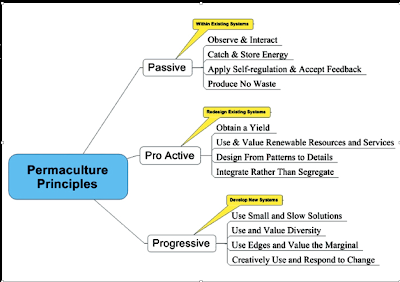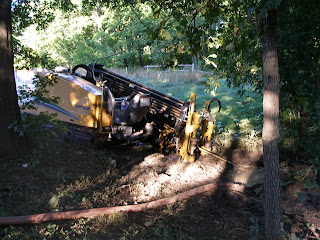AM950 Food Freedom Interview
Live interview about Permaculture on Food Freedom AM950
K: Welcome back to Food Freedom Radio, where we are planting the seeds of change on AM950, the progressive voice of Minnesota. I am Karen olson Johnson
L: And I am Laura Hedlund with us is Permaculture designer Dan
Halsey. For someone who is hearing “Permaculture for the first time”
Questions:
Dan… how do you get involved
Permaculture is a
ecologically principled way of living and many people find it in books,
magazines, or websites that have information. I ran across Permaculture
magazine at my local co-op about ten years ago. I then discovered that there
were many people in the Twin Cities teaching each other the different aspects
of through learning circles, which eventually became the Permaculture Research Institute,
Cold Climate. Across the nation and the world there are thousands of
organizations and individuals teaching the permaculture principles and
lifestyle. Most people start with Toby Hemmenway’s Gaia’s Garden as a
foundation and then move into the more detailed books by Bill Mollison, the
founder of permaculture, or Dave Jacke, but there are many great books about
permaculture.
Locally, SouthWoods
Permaculture and PRI have numerous design workshops and urban farming programs.
Today there is one in Welch, Minnesota through PRI and next week in Minneapolis by SouthWoods.
What Organizations are you involved with.
Southwoods
permaculture of course. I am on the board of Gardening Matters and the Woodhill
Urban Agriculture Center in Burnsville. I teach with PRI, Midwest Permaculture
in Stelle, Illinois, and have recently begun courses through Permaculture
British Columbia. I am also Graduate Research Assistant and TA at the
University of Minnesota. Having designed a few community gardens in the Twin Cities,
I am heavily involved with developing best practices for small urban gardens
and expanding the Natural Capital plant database, which is used by permaculture
designers.
Tell us about Permaculture in urban areas
The great thing about
permaculture is that it is scalable. Systems that work well are designed be
sized to any situation. In urban settings, intense planting systems and urban
cultivars can produce huge amounts of fresh nutritious food with small spaces.
One famous agrarian family in Pasadena, California, the Dervaes, harvest 3 to 5
tons of produce off their ¼ acre lot each year…… A documentary called Homegrown
is about them.
Many of the reasons we do
not harvest as much food as we can from urban lots has more to do with cultural
and social expectations than the space. Raised beds, container, and vertical
gardens with well-tended plants will supply a good portion of a family’s meals,
not to mention chicken eggs or in some places goat milk and cheese.
Also, Minneapolis just
passed new urban and market farm rules that allow renters and homeowners to
grow and sell their produce on-site. Full time market gardeners can grow their
income crops in the city, and that has been illegal since 1963. So urban and
municipal attitudes are catching up to the urgent need to grow food locally and
within reach.
And you know what? This fresh food tastes better, lasts
longer, costs less, and is more nutritious than long distance food. It also
reduces hunger and weight. I know immigrant gardeners that have lost 20 to 30
pounds in a season, just from going back to their traditional diet with
homegrown ingredients. Being green means eating green.
Why important at this time?
With energy decent, the
end of cheap oil, climate change, health care issues, and economic insecurity…permaculture
is a simple solution to all the complex issues and you can still be happy.
These are the principles
of permaculture that are the broad solutions to the big issues.
First we have three
ethics:
Care for the Earth
Care for People
Fair Share
Then there are 12
principles. (Holmgren)
Carbon footprint of Permaculture vs industrial food sysem?
Let’s talk about the Philosophy behind Permaculture such as no waste.
If you have a problem or
a situation that needs correction, you have three types of solutions. Cultural,
Ecological, or Technological. Most permaculture solutions are ecologically
based with a cultural adaptation. We relay on nature’s natural capital to
supply our needs and shift culturally to adapt to our environment, not fight
it. Technological solutions are high maintenance, expensive, usually toxic, and
short term. Ecological solutions are self-repairing, multifunctional and long
term. Also when an ecological solution has run its course, it is disassembled
into the organic material that created it. Almost everything in permaculture is
based on nutrient cycling so that there is no waste, only food for something
else.
Does anyone NOT like Permaculture green who idea of beauty?
The cultural aesthetic
expectation of straight lines and sterile landscapes are not conducive to
permaculture design. We like edges, curves, and transition zones of foliage,
not pavers or retaining wall block. Conventional landscaping is hard-edged and
high maintenance. A contained and contrived environment extended from
architecture.
re Zoning, popularity…
As far as zoning, again
it’s the cultural expectation separating the agricultural food spaces from the
“living” spaces. Definitions have changed over time. A properties value is
based on sterile opulence, not its ability to sustain its occupants.
Thom Hartmann had great
conversations this week about corn syrup. He and his wife have not
had corn syrup for decades. Thom talked about how poor people turn to
corn syrup products because it is the cheapest way to get lots of calories.
We need to figure out how to get healthy food to poor communities.
Can Permaculture do this?
Permaculture systems can
place an abundance of edible and nutritious plants, but people have to want to
eat it. If gardening was part of a school day and community gardens were the
summer school opportunity, children would learn what good food tastes like, how
easy it is to grow and choose that when they get older. Cities need to accept
food production as a vital resource within the city. Can you inmage closing a
street and making it a market garden?
Local food will come from places such as this and tiny restaurants on
corners, community kitchens where large harvests can be processed or canned,
and neighborhood stores that are willing to buy produce from their
neighborhood. But overall, poor eating habits are a sign of a dysfunctional
community, either the resources are lacking or the social structure pressures
bad choices. Snacks are not intended to be a meal, but if you are hungry, you
grab a bag of Doritoes and a 2 liter Pepsi.
Urban Agriculture, recent Mpls zoning changes
Can we create a Free food movement? Raspberries in alleyways? Fruit tress?
Until the diesel runs out
or its too expensive, we will have big ag in the rural areas growing a majority
of the food, but sooner or later either we will have to move into the rural
areas where the food will be or move the rural lifestyle into the city and grow
it here. .
Gleaners
Nut Trees
Community Orchards
Why so important to the energy of the planet
Food freedom.. how does Permaculture fit into food freedom
Laura: We will take a short break. We welcome your calls 952 946 6205 when we return we get into the nitty gritty of how to create our own food forest.
Karen: You are listening to Food Freedom on AM950, the progressive voice of Minnesota
Segment Three:
Karen opens: Let’s get into Practical information about how we do this in our yard…. Dan what is the first thing…
The first thing needed is
observation of our yard. Where does the sun shine? Does is shine anywhere? A
southern exposure will be the most productive. What is already growing there?
Do I have soil to grow in or do I need to build a raised garden bed. Is the
soil contaminated? Then walk the neighborhood and see what people are doing.
There is much to be learned from a conversation with a local gardener.
City living what can do in small spaces.
Popular with urban
farmers are the smaller urban cultivars. Krista Lerass of Harvest Moon and Russ
Henry of Giving Tree Gardens grow smaller vegetable cultivars and use vertical
beds to increase the variety and relay the harvests so plants mature at
different times. Any south facing wall can become a green wall of vegetables
using planter trellises and hanging baskets.
What types of food forest work best for the city?
Fruit trees can be sized
for about any yard. You can get a 10 foot or 16 foot dwarf apple tree. Cherry
trees fit well into an urban setting. Kiwi vines, grapes, and numerous fruiting
shrubs can fill a yard in no time.
Underneath the taller
plants are layers of edibles. There are seven layers to an edible forest. Each protects or supports the
others.
Robert Hart:
- · Canopy layer’ consisting of the original mature fruit trees.
- · ‘Low-tree layer’ of smaller nut and fruit trees on dwarfing root stocks.
- · ‘Shrub layer’ of fruit bushes such as currants and berries.
- · ‘Herbaceous layer’ of perennial vegetables and herbs.
- · ‘Ground cover layer’ of edible plants that spread horizontally.
- · ‘Rhizosphere’ or ‘underground’ dimension of plants grown for their roots and tubers.
- · ‘Vertical layer’ of vines and climbers.
Can you grow any Food in shade?
Certainly, that is what a
rain forest is. Here we have many
plants that can photosynthesize in low light. Many are leafy greens like miners
lettuce, but also Broccoli, potatoes, and then others that will grow in partial
shade, pumpkins, beets, squash, Kohlrabi, and chard.
Companion planting. After I went to one of your workshops, strawberries around our fruit trees. Tips?
Fill the understory of
the trees with smaller plants, fruiting, perennials… The biggest competitor to
trees is grass. Use the trees closest to each other to create a curvy planting
bed and fill it with perennials and small shrubs. This connects the trees,
reduces competition and creates a unifying element in the landscape. It also
creates beneficial habitat for pest control. Depending on your soil, anything
is better than grass.
Both Karen & I have experience with gardens traits similar to Permaculture. Karen your dad called it reseeding..
I get gallons of raspberries from my suburban yard. We’ve given plants away
Dan you are inviting listeners to visit your food forest..
Yes, thanks, we have a
permablitz picnic today where visitors learn about permaculture and help build
or maintain some of our plant systems. Its from 9:30 to 1:30 BYOL. The design
classroom studio will also be open.
Laura will signal Karen at 40 seconds
Karen begins wrap – up & review: Thank you Dan, you help us understand the bounty of our world and our potential for creating food forests. We talked meat and in the next segment, Laura & I will share our food confessions & hero moments, our frugal recipes
Laura: You are listening to Food Freedom Radio, where we plant the seeds for change on AM950, the progressive voice of MN
Laura will signal Karen at 40 seconds
Karen begins wrap – up & review: Thank you Dan, you help us understand the bounty of our world and our potential for creating food forests. We talked meat and in the next segment, Laura & I will share our food confessions & hero moments, our frugal recipes
Laura: You are listening to Food Freedom Radio, where we plant the seeds for change on AM950, the progressive voice of MN



Comments